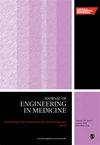Effects of self-etch adhesive agitation with diode laser on dentin bond strength
IF 1.5
4区 医学
Q3 ENGINEERING, BIOMEDICAL
Proceedings of the Institution of Mechanical Engineers, Part H: Journal of Engineering in Medicine
Pub Date : 2024-09-11
DOI:10.1177/09544119241276069
引用次数: 0
Abstract
The present study assessed the effect of active application of self-etch adhesives with diode laser irradiation on the shear dentin bond strength. Sixty bovine incisors, each embedded individually in hard plaster blocks, were divided into two groups based on the adhesive system used: Group 1 Adper Easy One and Group 2 Clearfil SE Protect. Based on the application technique of self-etch adhesives, each main group was further divided into three subgroups: passive application, active application with a micro-brush, and active application with a 976-nm diode laser tip (phototherapy active application). Shear bond strength tests were conducted using a universal testing machine and the data were analyzed by two-way ANOVA. Post hoc multiple comparisons were performed with the Tukey HSD test. Additionally, the statistical analysis of failure mode distribution was carried out using the chi-squared test ( p < 0.05). While the adhesive system exhibited significant differences in shear dentin bond strengths, there were no significant differences in application techniques. Regardless of the application technique, Clearfil SE Protect demonstrated significantly higher dentin bond strength than Adper Easy One. In the present study, the utilization of phototherapy through a 976-nm diode laser for the active application of the tested self-etch adhesives demonstrated similar initial dentin bond strengths to conventional application methods.二极管激光搅拌自酸蚀粘合剂对牙本质粘接强度的影响
本研究评估了在二极管激光照射下主动使用自酸蚀粘合剂对牙本质剪切粘接强度的影响。根据所使用的粘接剂系统,将各自嵌入硬石膏块中的 60 颗牛门牙分为两组:第一组为 Adper Easy One,第二组为 Clearfil SE Protect。根据自酸蚀粘合剂的应用技术,每个主组又分为三个亚组:被动应用、用微型刷主动应用和用波长为 976 纳米的二极管激光主动应用(光疗主动应用)。使用万能试验机进行了剪切粘接强度测试,并对数据进行了双向方差分析。采用 Tukey HSD 检验进行事后多重比较。此外,还使用卡方检验(p < 0.05)对失效模式分布进行了统计分析。虽然粘合剂系统在剪切牙本质粘接强度方面存在显著差异,但在应用技术方面却没有显著差异。无论使用哪种粘接技术,Clearfil SE Protect 的牙本质粘接强度都明显高于 Adper Easy One。在本研究中,利用波长为 976 纳米的二极管激光器进行光疗来主动应用测试的自酸蚀粘合剂,其初始牙本质粘结强度与传统应用方法相似。
本文章由计算机程序翻译,如有差异,请以英文原文为准。
求助全文
约1分钟内获得全文
求助全文
来源期刊

CiteScore
3.60
自引率
5.60%
发文量
122
审稿时长
6 months
期刊介绍:
The Journal of Engineering in Medicine is an interdisciplinary journal encompassing all aspects of engineering in medicine. The Journal is a vital tool for maintaining an understanding of the newest techniques and research in medical engineering.
 求助内容:
求助内容: 应助结果提醒方式:
应助结果提醒方式:


